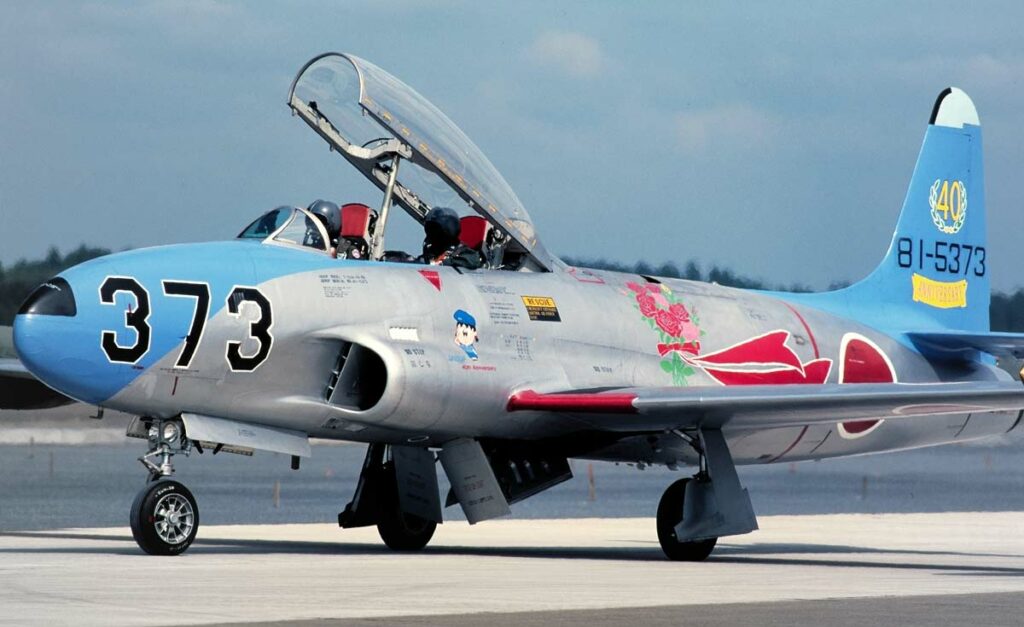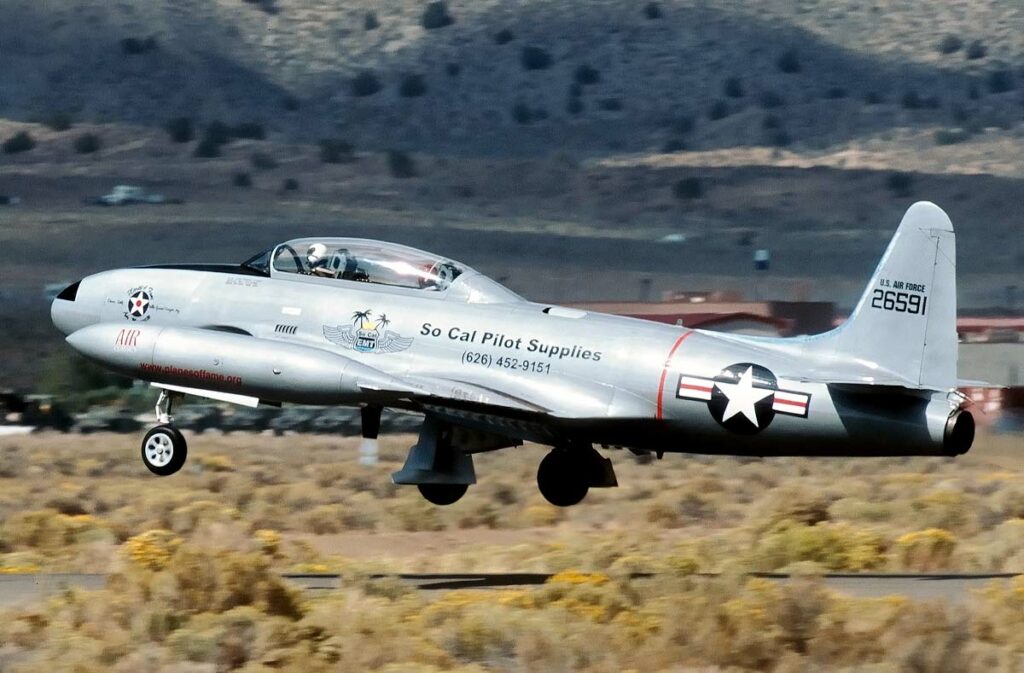The Lockheed T-33, a two-seat jet trainer aircraft, served as a pivotal bridge between propeller-driven trainers and jet fighters post-WWII.
The Lockheed T-33, affectionately known as the “T-Bird,” holds a significant place in aviation history as a jet trainer. Its development marked a transitional era in military aviation, bridging the gap between the propeller and jet age.

History of the Development of the Lockheed T-33
Post-World War II was a period of rapid technological advancement in aviation. The emergence of jet propulsion revolutionized aircraft design and capabilities, necessitating new training methods for pilots transitioning from propeller-driven aircraft to jets. The Lockheed T-33 was developed to address the growing need for a jet trainer that could effectively prepare pilots for the new generation of jet fighters. The objective was to create an aircraft that was both capable of mimicking the performance of frontline jets and forgiving enough for instructional purposes.
The program was initiated by the United States Air Force (USAF) as they sought to modernize their training fleet. Lockheed, having success with their P-80 Shooting Star, the first operational jet fighter for the USAF, was tasked with developing the trainer variant.
The Lockheed T-33 made its first flight on March 22, 1948. This milestone marked the beginning of its journey as a cornerstone in jet pilot training.
Design of the Lockheed T-33
The T-33 was essentially a modified Lockheed P-80 Shooting Star. It was longer to accommodate a second seat in tandem configuration for the instructor and trainee. The design featured a straight wing, a feature common in early jet aircraft, and a conventional tail.
- Length: 37 ft 9 in (11.51 m)
- Wingspan: 38 ft 10.5 in (11.85 m)
- Height: 11 ft 8 in (3.56 m)
- Wing Area: 234.8 sq ft (21.83 m²)
The T-33’s simplicity and reliability were among its greatest advantages. Its design allowed for easy maintenance and operation, crucial for a training aircraft. However, its straight-wing design limited its speed and maneuverability compared to later swept-wing designs.
The T-33’s contribution to training jet pilots cannot be overstated. It provided a realistic yet forgiving platform for thousands of pilots transitioning to more advanced jet fighters.
Performance of the Lockheed T-33
Powered by an Allison J33-A-35 turbojet engine, the T-33 offered ample power for training missions.
- Engine Power: 5,400 lbf (24 kN)
- Speed, Altitude, and Range:
- Maximum Speed: 600 mph (970 km/h)
- Service Ceiling: 48,000 ft (14,630 m)
- Range: 1,275 miles (2,050 km)
When compared to contemporaries like the British Vampire Trainer, the T-33 was less agile but more reliable. It couldn’t match the performance of frontline fighters but was perfectly tuned for its training role.

Military Use and Combat of the Lockheed T-33
The T-33 was typically unarmed but could be equipped with machine guns and practice bombs for weapons training.
Though primarily a trainer, the T-33 saw limited combat use. It served in various reconnaissance and secondary roles during conflicts.
The T-33 played roles in the Korean War and other Cold War-era conflicts. It was used for training, reconnaissance, and sometimes light attack missions.
The T-33 was widely exported, serving in over 40 countries. Its widespread use underscored its reliability and effectiveness as a training platform.
While most have been retired, some T-33s still serve in limited roles. They have been largely replaced by more modern trainers like the T-38 Talon.
The Lockheed T-33’s legacy in military aviation history is profound. As one of the first jet trainers, it played a crucial role in transitioning pilots into the jet age, proving itself as an invaluable asset in pilot training for decades.
Back to the Fighter Jet section.